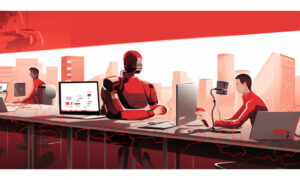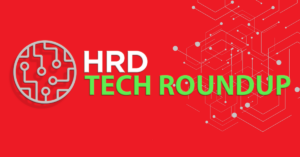Why data matters: key developments in digital HR strategy today
- 6 Min Read
From innovative CHROs to retaining the human touch, discover some of the key changes in digital HR strategy for organisations.
- Author: Fin Murphy
- Date published: Feb 11, 2021
- Categories

According to the 2021 Deloitte Global Human Capital Trends survey, senior executives and individual workers ranked ‘increasing innovation’ as the second-most important outcome in work transformation efforts.
It’s an opportune moment for HR leaders to analyse their digital HR strategy. Do CHROs have the requisite skills to plan and successfully execute digital HR strategy? Are organisations harnessing the predictive power of data? Plus, can every layer of the workforce benefit from increased digital change?
To further explore the topic, we gained some exclusive insight from Shaloo Kakkar Kulkarni, partner and acting CHRO at major executive recruitment firm Heidrick & Struggles, and previously of Santander and Citibank. With particular expertise in leadership, human capital and digital acceleration, Shaloo covers the key developments in digital HR strategy today and why they matter.
The need for digital dexterity in digital HR strategy
We’ve seen some shifts over the last 10 years and, as you look to the future of the CHRO, one of the things that has emerged is digital dexterity.
This is really focused on the skill sets of tomorrow’s leaders, and when we apply that to the CHRO population, some of the things that we find in the analysis are data literacy capacity, innovation potential, and the ability to continuously learn by curiosity.
In the digital transformation space, it has been expected of business leaders; we’re increasingly seeing it as a critical requirement for CHROs. When you look at succession plans, talent growth and development opportunities, being digitally dexterous is extremely important for HR leaders going forward. There has been a historic gap where HR is seen more as a delivery function, but this has shifted over time. It’s becoming much more strategic.
Typically, organisations haven’t invested many resources in building digital skills and dexterity for what they would classify as core support functions, like HR. That is where we see a trend that needs to stop.
By being able to measure and to develop the digital dexterity of current and future HR leaders, you make them much more effective in a transformation environment. The way I frame it is the ability to succeed and lead in a digital world, but to do so with agility. It’s about being able to mobilise resources, to deliver traction, to deliver organisational transformation and to achieve success.
The current generation of CHROs needs to be able to speak the digital language that organisations are increasingly expecting from the leaders, but the next generation of HR leaders will be a lot more digitally native, just by virtue of having that exposure.
How people analytics can become an invaluable tool
The people analytics space is coming of age and with that comes a pivot from historic data analysis to a more predictive space.
In recent times, we’ve seen organisations fail to really harness the potential of the people analytics function. A lot of data scientists are really mining data, people data, not just within the organisation, but also external data. Large tech companies do this task fabulously, but many others are now slowly coming on board to adopt this trend. There’s a lot of potential across most organisations to add real bottom line business value through it.
Equally, if you think of where that trend is going, it’s rather limiting to have just a people analytics function within the HR function. Unless you have HR professionals, leaders, emerging leaders, who really understand data, and think data, all you’re going to do with the people analytics function is create more reports.
By thinking and applying that data lens a lot more actively, the people analytics function becomes your feed on the data. You submit your requirements, and it provides you with a comprehensive analysis.
There is a lot more to be done to really effectively mine that information, and use it to predict the future, to use it to strategically plan your workforce requirements, to pick up early trends, to anticipate attrition. There’s so much data across the board that organisations now have access to customer data, and I think the role of HR becomes a lot more focused on connecting the dots.
How do you take the customer data, which might be your engagement information or customer experience information, or segmentation information? How do you translate that into employee experiences and employee engagement? Unless you can build that connection, as your customers engage with your organisation, they will see a gap.
Why mindsets are as important as machines in digital HR strategy
What you fundamentally need is a mindset shift in HR. People decisions can be taken based on perception, on the influence of senior leaders, but what you need is an HR function that acknowledges all of that, but at the same time, applies a lot more rigour in terms of decision making.
When you have HR leaders who are willing, every now and then, to challenge the data, that’s when you start building a cultural shift in an organisation.
The human element is always going to be a significant part of digital HR strategy, or people decision making in an organisation. The question is, what are you informing the human element with? What those decisions are informed by, increasingly, will be a shift of using insights that are a lot more data-driven.
You can now measure culture, you can measure potential, and you can measure the agility in an organisation. These are traditionally some of the softer areas, which we haven’t had the tools to measure, but now we are in a space where we can do all of that.
Any new technology capability brings with it some risks. When you talk about biases, for instance, without technology or data, biases also exist in decision making. How you use the data is something that requires the expertise and experience of an HR leadership team, and that’s where they can utilise experience that they would have built over the years. This creates a balance in what the information is telling them versus the context of the organisation, and then drive decision making from it.








